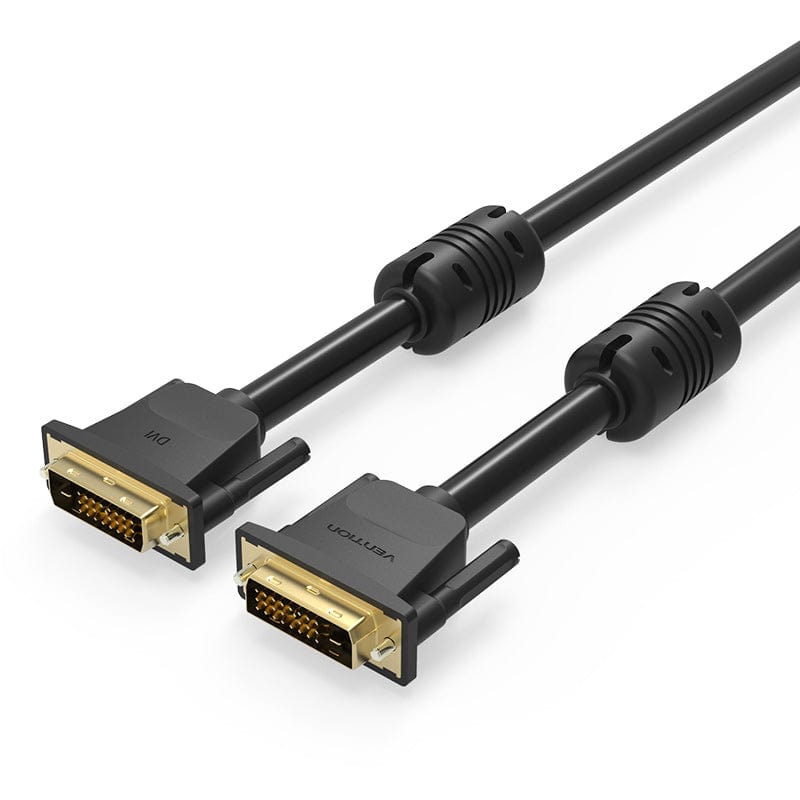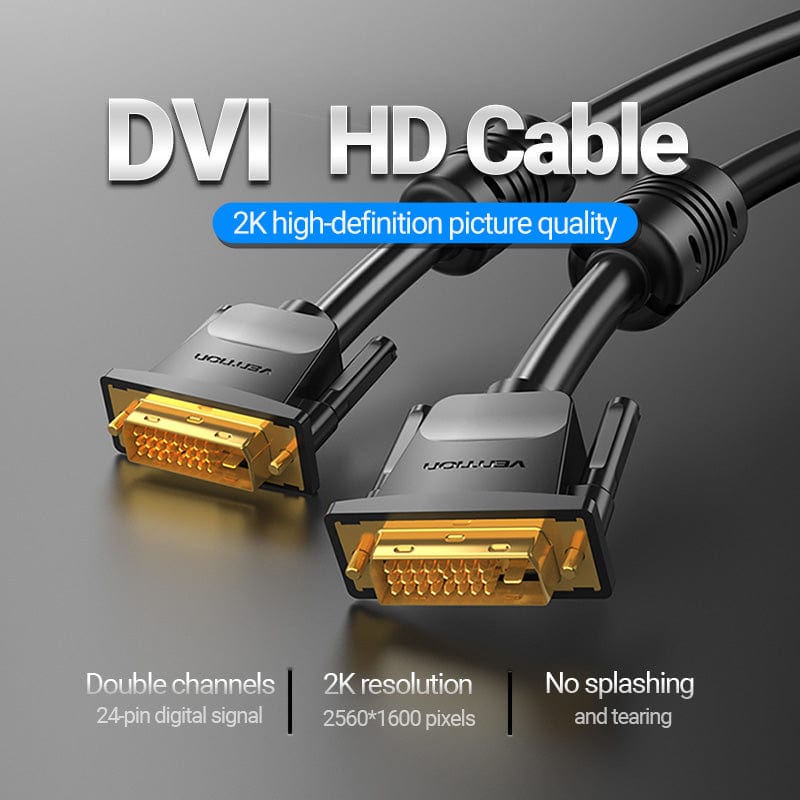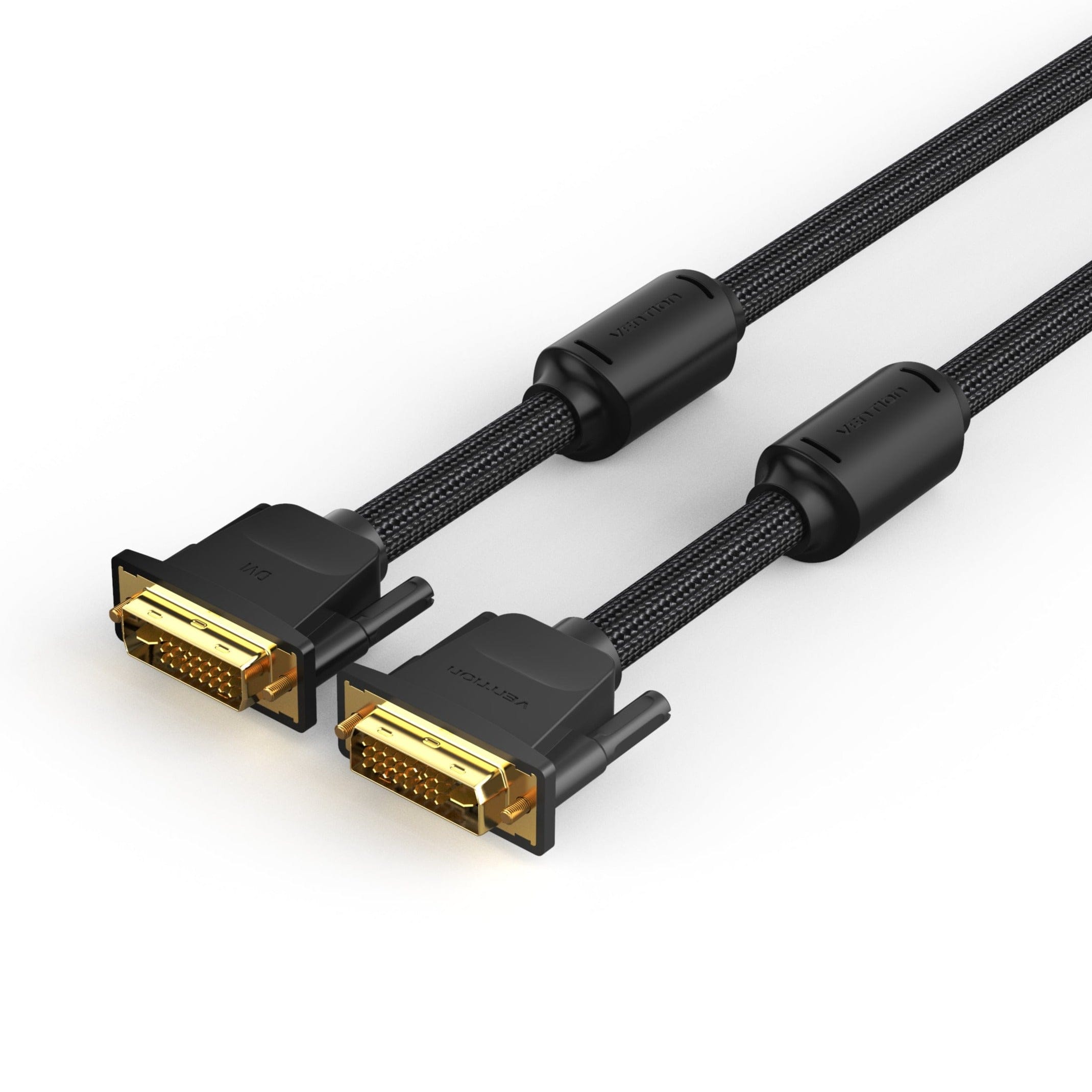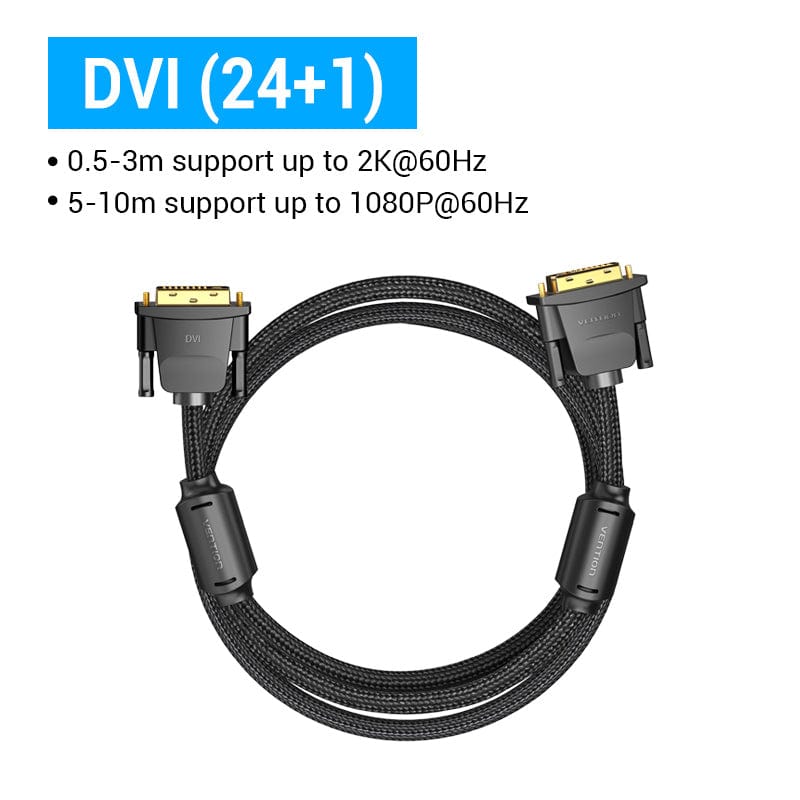Producto
Cable DVI
2 productos
Mostrando 1 - 2 de 2 productos
El cable de interfaz visual digital, DVI, transmite señales de vídeo desde una fuente AV al televisor. La calidad de imagen de la transmisión es mucho mejor que la del cable VGA. El cable DVI es compatible con diferentes configuraciones de pines para transmitir vídeos de mayor resolución cuando se conecta a una PC. Con la configuración de pines correcta, puede generar señales de video 4K solo para PC que puedan mostrar una resolución de video tan alta.
El cable está diseñado únicamente para señales de vídeo. Sin embargo, su configuración permite utilizar cables de audio en un mismo dispositivo electrónico.
El cable DVI conecta diferentes componentes electrónicos
El cable ofrece comodidad para los expertos en tecnología y otras personas que utilizan con frecuencia dispositivos electrónicos de salida diferente. Es una opción perfecta para conectar televisores, computadoras portátiles, proyectores de video, computadoras de escritorio o dispositivos portátiles más pequeños. La única característica necesaria para usar un cable DVI es el puerto de entrada que se encuentra en los dispositivos electrónicos que se van a conectar.
El uso diverso ha hecho de DVI una de las opciones más confiables para ver videos de buena calidad en diferentes pantallas electrónicas.
Hay diferentes cables DVI disponibles
Los diferentes modelos en el mercado son diferentes. Tres cables comunes son DVI-A, DVI-D y DVI-I.
DVI-A (analógico)
Está diseñado con un propósito exclusivo que es transmitir señales de video analógicas. El cable se utiliza para conectar la tarjeta DVI a un monitor, que recibe vídeo de alta calidad. Esta conexión funciona convirtiendo las señales digitales en señales analógicas, que se muestran en el monitor.
DVI-D (Digital)
Este cable se utiliza mejor para conectar pantallas LCD a tarjetas DVI para obtener vídeos de alta calidad. La transferencia de archivos entre los dos dispositivos electrónicos es mucho más rápida en comparación con otras opciones de cable. La velocidad de transferencia es alta porque se utiliza un cable con formato de enlace dual en lugar de un cable con formato de enlace único. Hasta ahora, el cable de formato DVI-D de doble enlace es la mejor conexión para dispositivos electrónicos con pantallas LCD.
DVI-I (combinado: analógico y digital)
Este es el tipo de cable DVI que combina las características del cable DVI-A y DVI-D en uno. El cable se puede utilizar con monitores electrónicos tanto analógicos como digitales. Es el cable el que crea una distinción significativa entre los cables de vídeo DVI y VGA.
Función plug and play
El cable DVI es fácil de usar en comparación con los modelos analógicos más antiguos. El cable simplemente se puede conectar al dispositivo electrónico para comenzar a transferir señales. La función plug and play ayuda a ahorrar tiempo porque otras opciones pueden requerir apagar los dispositivos electrónicos y esperar largos minutos antes de reiniciarlos.
Resolución de píxeles
Los cables DVI generalmente transmiten un rango similar de píxeles para los modelos de enlace único y dual. El rango de píxeles para los modelos de enlace único es de hasta 1920x1200, mientras que el rango de píxeles para los modelos de enlace doble es de 2560x1600. El cable DVI también tiene una frecuencia de actualización general de 144 Hz. Esto lo convierte en un cable de transferencia ideal para monitores que transmiten hasta 1080p. Y la clasificación de FPS para esta tasa de transferencia es significativamente superior a 60.
Sin embargo, el objetivo es encontrar un monitor que sea compatible con el cable de doble enlace para obtener imágenes de mayor calidad.




